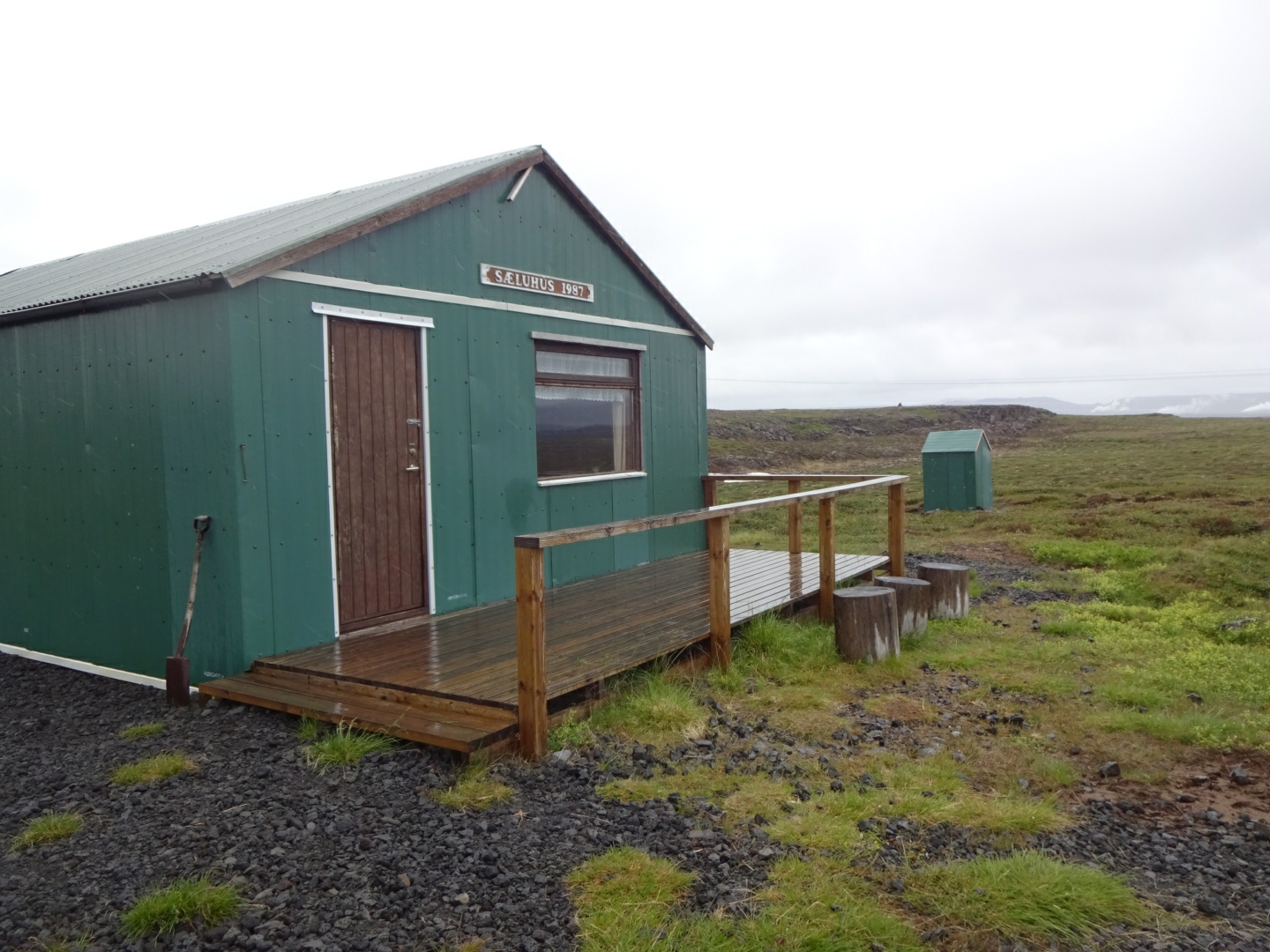In the morning I visited the small National Gallery of Iceland. Best part was an exhibition of watercolours by a Swedish artist who worked in fashion for "Vogue" and the like. In a few strokes of blurry paint he managed to capture a person's expression or the swish of a dress. In the basement the video installations did not excite my attention so I was glad when my brother and sister-in-law rang. They had just arrived in Iceland and were staying the night near Keflavik airport. As I was spending my final night in Keflavik for an early flight next day we agreed to meet there. Two buses later and I joined them in their hotel in an industrial part of town which probably gave them a misleading impression of what Iceland was like.
Being near the famous Blue Lagoon, that seemed an ideal place to go to relax, for me being it was my final day and for them to recover from their early morning flight and the lack of sleep getting to the airport the previous night. After struggling to work out which queue we should be in, we gained entry to the warm, turquoise blue and rather salty water (it stings when it gets in your eyes), surrounded by chunks of black rock with bubbles in (solidified lava with vesicles). The area of water was larger than I thought and there was a free mud pack to try. Not sure it improved my complexion, it certainly made people look funny. Dinner that evening was at the Duus restaurant at the far end of town. We had a table overlooking a small boat harbour and it seemed appropriate to try the fish. Quite filling.
Next day it was a bit of a shock getting on the plane and seeing everyone one in face masks. Although there were signs with advice and plenty of antiseptic hand gel in Iceland, no-one seemed too fearful about the Covid 19 pandemic and face masks were very rare. Occasional cases were reported in the media, and the details provided of how people caught the virus gave confidence that the health authorities had the situation under control. In Britain things seemed to be going the other way with face masks now required in shops as well as on trains and buses, unlike earlier in the pandemic when there were more cases. I filled in the lengthy online form required for those returning to the Britain, fortunately 14 days self isolation is not required if you are travelling from Iceland, although no-one checked on my arrival at London's Luton airport. On my journey back to Cardiff, only half the people on the trains seem to be wearing masks, or rather wearing masks covering their face and nose. In Britain there seem to be lots of rules (that appear unnecessary in Iceland) but little checking and enforcement. It seems strange that Iceland does not need all the restrictive measures required in Britain and keeps schools and businesses running yet still keeps the number of Covid-19 cases low. I know the population in Iceland is less densely spaced but the biggest difference I noticed was being tested at the airport, and getting a response within hours. I read in the British press that we are even failing to reach government targets for testing in Care homes.
Update: The following day I visited a Pub in my home town of Cardiff. Unlike in Iceland where there appeared no restrictions, here we had to give our name and telephone number, were allocated a table outside in the car park, well separated from other tables, and only table service was available. Although they had beer their supplier had been unable to provide crisps or nuts. In the city people, three quarters of the shops and cafes were open, and people were about, a big improvement to when I left a month ago. One of the main streets had been closed and turned into a large pavement café. People dutifully queued 2 metres (sort of) apart and I had a very nice 50% off a coffee and sandwich at Cafe Nero, a government scheme to support the hospitality trade.





















































